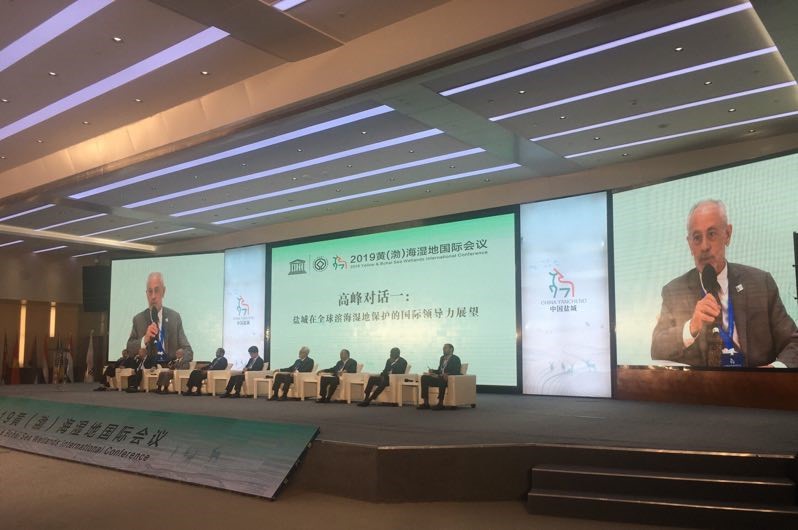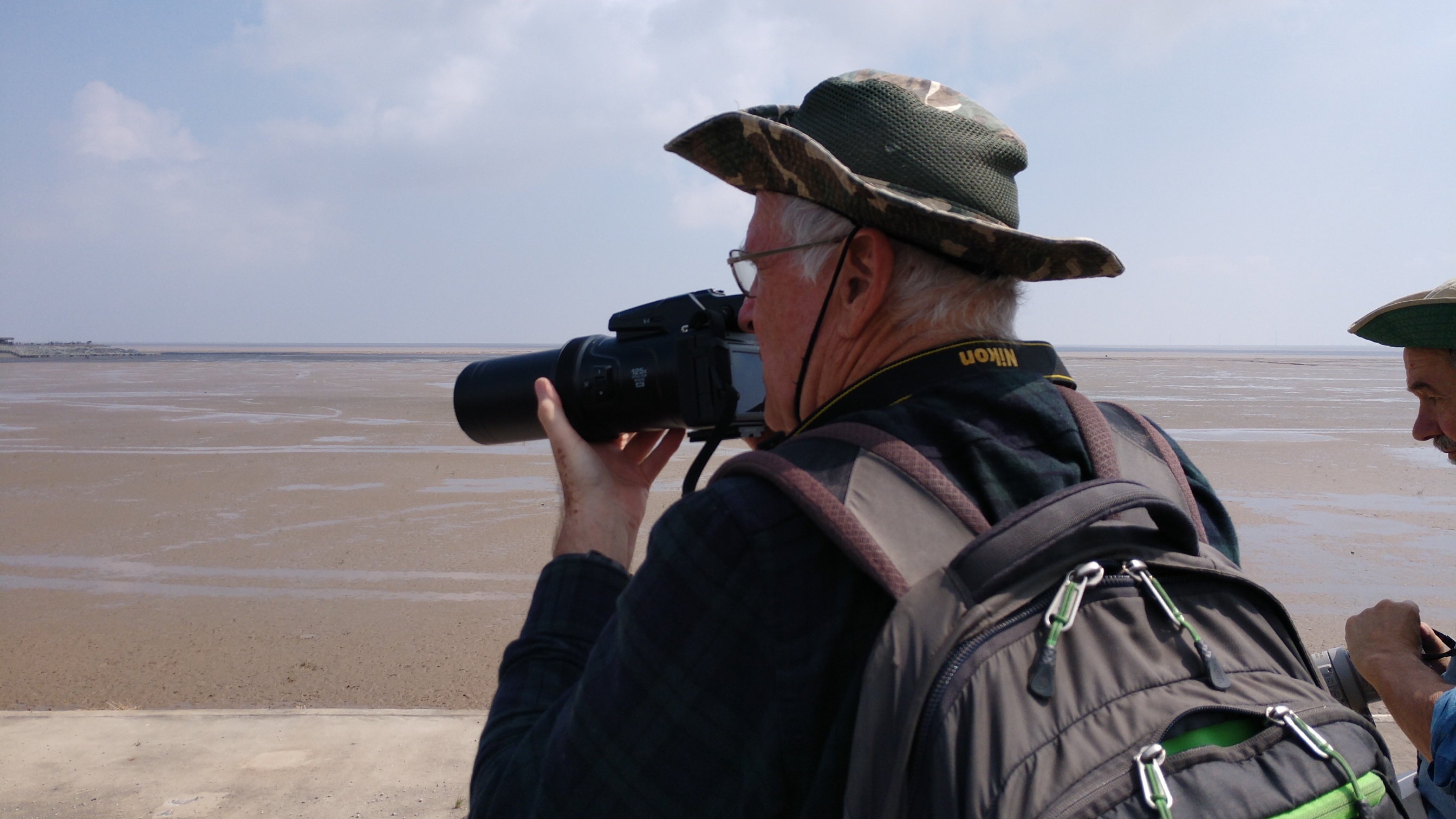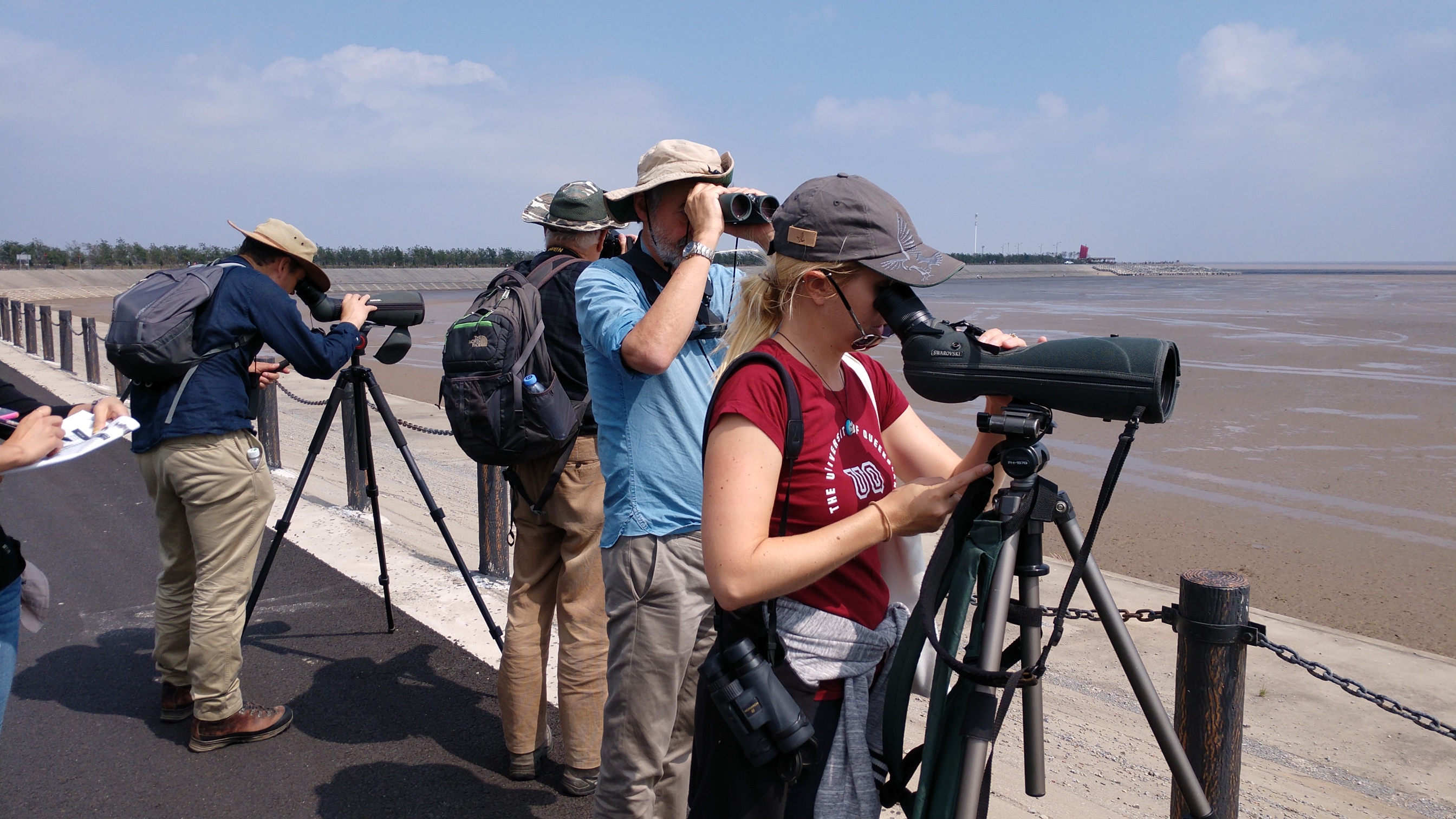
As Executive Director of Cornell Botanic Gardens, it is always a joy and adventure to visit gardens and natural areas in other parts of the world. A few weeks ago, I was invited to participate in the 2019 Yellow & Bohai Sea World Heritage Conference. The eastern coast of China is part of the East-Asian Australasian Flyway, arguably the most important flyway in the world for migratory shorebirds. What an experience! During the conference, we visited the mudflats along the eastern coast China, in which these rare birds forage. Thirty million birds, representing more than 35 species, use this flyway. Many are declining rapidly. Some, like the Spoon-billed Sandpiper are extremely rare; perhaps only 300 remaining in the wild.
While these flats are so seemingly desolate, other than a few clumps of non-native grasses, they are in fact incredibly rich in tiny bivalves, shellfish, and other food sources. These seascapes provide all the energy the birds need to navigate huge migration distances. The ecological restoration and conservation of this site is paramount and was the reason for the conference. I serve as Chair of the International Union for the Conservation of Nature’s (IUCN) National Committee for the USA. The IUCN is the oldest and largest conservation organization in the world and is closely engaged in the designation of World Heritage Sites. Thus, it was particularly notable that, in July of this year, the Yellow and Bohai Sea wetlands were granted World Heritage Site designation given their importance for migratory shorebirds. The main goals of the conference, therefore, were to develop a vision and plan for the site and to consider how to expand World Heritage designation to other areas in China and Korea that would further ensure the integrity of the habitats and of the bird populations.
In addition to representing the IUCN-US, I was also there to promote Cornell University and Cornell Botanic Gardens as leaders in addressing global conservation issues. As a member of the Provost’s Migrations Task Force, I took this opportunity to share all that Cornell and Botanic Gardens are doing with respect to environmental conservation. In my remarks during the conference’s Opening Ceremony, I made a point of saying that “it will take the world to save the world.” The issues we are facing and dealing with (such as climate change, disruption to local and indigenous communities, coral bleaching, and degrading ecologies and migratory bird routes) are global problems. The fact that these birds fly twice a year along this flyway, from the Arctic to as far south as New Zealand and back, remind us that the world is connected and that focusing on an issue at a local scale is insufficient. Understanding the places and landscapes these birds in Alaska or Russia, in eastern China, and in south Asia and the Pacific depend on, gives us a different perspective on conservation and healing the Earth. It requires us to appreciate these other parts of the world; their natural, human, and cultural histories. These birds are, in a meaningful way, a part of what I call “Nature’s diplomacy.” They are part of a bioculturally rich tapestry on which we all depend – conserving that which is at the heart of Cornell Botanic Gardens’ mission and my lifelong passion. My joy in seeing these seascapes was eclipsed only by the great work being done to conserve them.



Christopher Dunn is the Elizabeth Newman Wilds executive director of Cornell Botanic Gardens